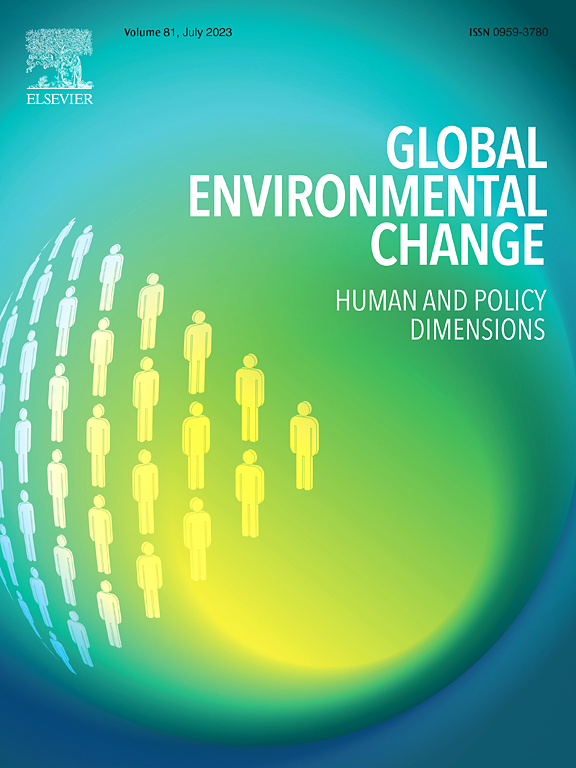为什么巴西塞拉多被自愿性环境政策抛在了后面?
IF 9.1
1区 环境科学与生态学
Q1 ENVIRONMENTAL SCIENCES
引用次数: 0
摘要
大豆生产的扩大已经成为巴西亚马逊和生物多样性丰富的塞拉多大草原生态系统森林砍伐的驱动因素。为了解决这个问题,大豆行业于2006年在亚马逊地区实施了一项全行业的零砍伐政策,称为“大豆禁令”。大豆禁令大大减少了亚马逊地区因大豆而导致的森林砍伐。然而,迄今为止,尽管大量砍伐大豆,邻近的塞拉多仍未受到保护。在这里,我们要问为什么塞拉多没有实施类似的零森林砍伐协议。为了回答这个问题,我们将自愿性环境政策文献中的政策采纳和选择理论与公共政策、政治经济学和组织理论中的政策过程和可行性理论结合起来。这个扩展的框架使我们能够更好地理解历史、政治和地理背景因素如何影响亚马逊和塞拉多不同的政策采用结果。然后,我们进行了26次深度访谈,包括与主要私营部门决策者就政策采用进行访谈,以了解不同潜在因素的相对重要性。我们发现,公众意识、国家政治和叙事方面的差异、贸易关系的变化、领导力和沉没的投资影响了协议在亚马逊而不是塞拉多地区达成的原因。尽管如此,随着巴西政治转向左中联盟,并努力将新的尽职调查森林砍伐法规扩展到包括塞拉多在内的其他林地,塞拉多保护政策的新政治窗口最近出现了。本文章由计算机程序翻译,如有差异,请以英文原文为准。
Why has the Brazilian Cerrado been left behind by voluntary environmental policies?
The expansion of soy production has been a deforestation driver in Brazil in both the Amazon and the highly biodiverse Cerrado savannah ecosystem. To tackle this problem the soy industry implemented a sector-wide zero-deforestation policy in 2006 in the Amazon called the Soy Moratorium. The Soy Moratorium sharply reduced the soy-driven deforestation in the Amazon. However, to date, despite substantial soy deforestation, the neighbouring Cerrado remains unprotected. Here we ask why no comparable zero-deforestation agreement was implemented in the Cerrado. To answer this question, we integrated theory on policy adoption and selection from the voluntary environmental policy literature with theory on policy process and feasibility from public policy, political economy, and organizational theory. This expanded framework enabled us to better understand how historical, political and geographical contextual factors shaped the differing policy adoption outcomes in the Amazon and Cerrado. We then conducted 26 in-depth interviews, including with key private sector decision-makers on policy adoption to understand the relative importance of different potential factors. We found that the differences in public awareness, national politics and narratives, changes in trade relationships, leadership and sunk investments influenced why an agreement emerged in the Amazon and not the Cerrado. Despite these circumstances, a new political window for Cerrado conservation policies has recently emerged with Brazil’s political shifts to a left-centre coalition and efforts to extend new due-diligence deforestation regulations to other wooded lands, including the Cerrado.
求助全文
通过发布文献求助,成功后即可免费获取论文全文。
去求助
来源期刊

Global Environmental Change
环境科学-环境科学
CiteScore
18.20
自引率
2.20%
发文量
146
审稿时长
12 months
期刊介绍:
Global Environmental Change is a prestigious international journal that publishes articles of high quality, both theoretically and empirically rigorous. The journal aims to contribute to the understanding of global environmental change from the perspectives of human and policy dimensions. Specifically, it considers global environmental change as the result of processes occurring at the local level, but with wide-ranging impacts on various spatial, temporal, and socio-political scales.
In terms of content, the journal seeks articles with a strong social science component. This includes research that examines the societal drivers and consequences of environmental change, as well as social and policy processes that aim to address these challenges. While the journal covers a broad range of topics, including biodiversity and ecosystem services, climate, coasts, food systems, land use and land cover, oceans, urban areas, and water resources, it also welcomes contributions that investigate the drivers, consequences, and management of other areas affected by environmental change.
Overall, Global Environmental Change encourages research that deepens our understanding of the complex interactions between human activities and the environment, with the goal of informing policy and decision-making.
 求助内容:
求助内容: 应助结果提醒方式:
应助结果提醒方式:


